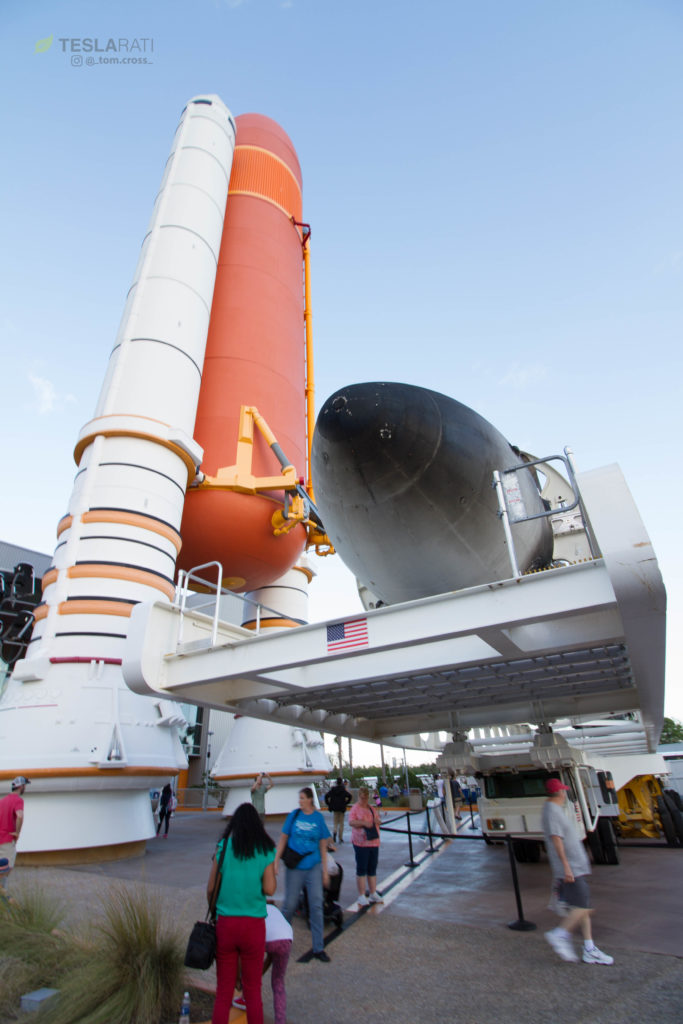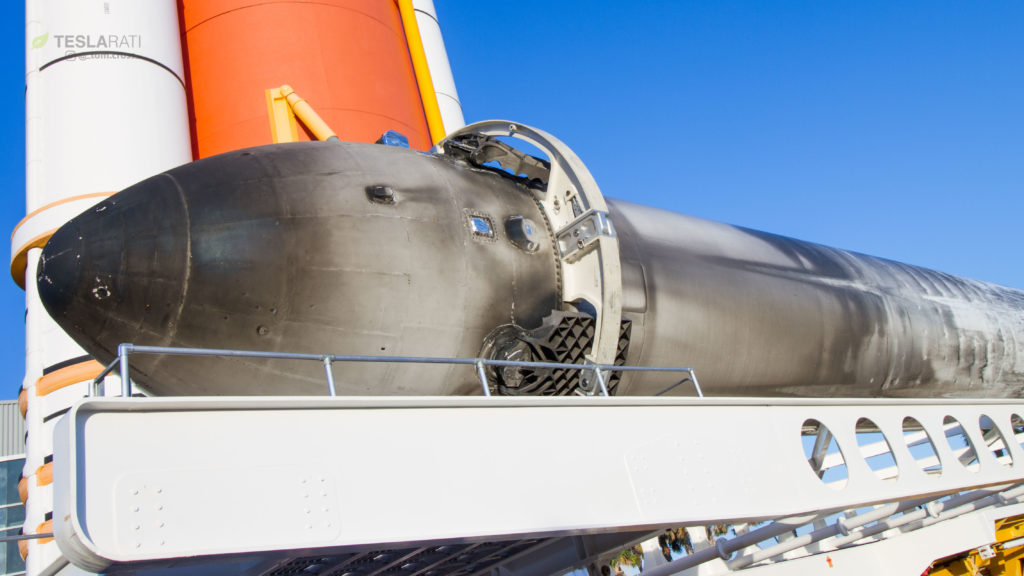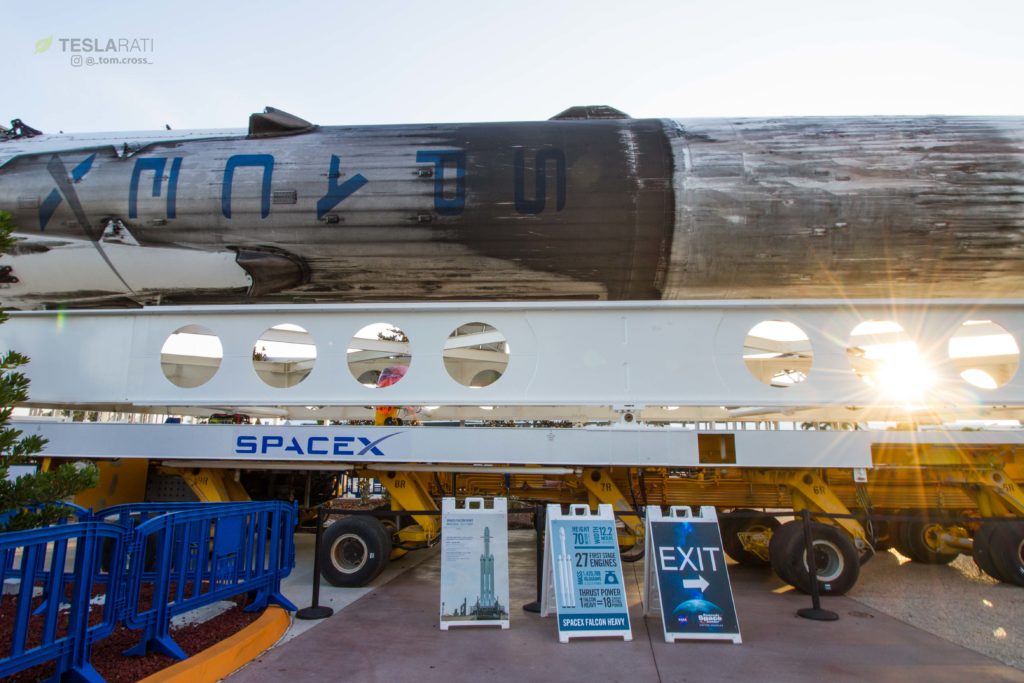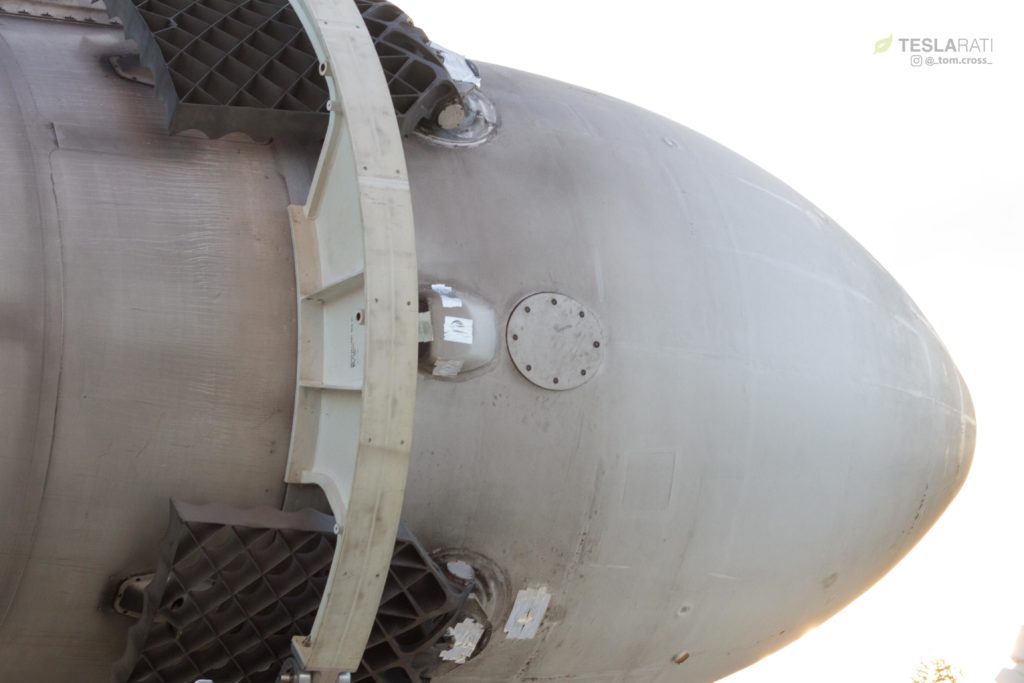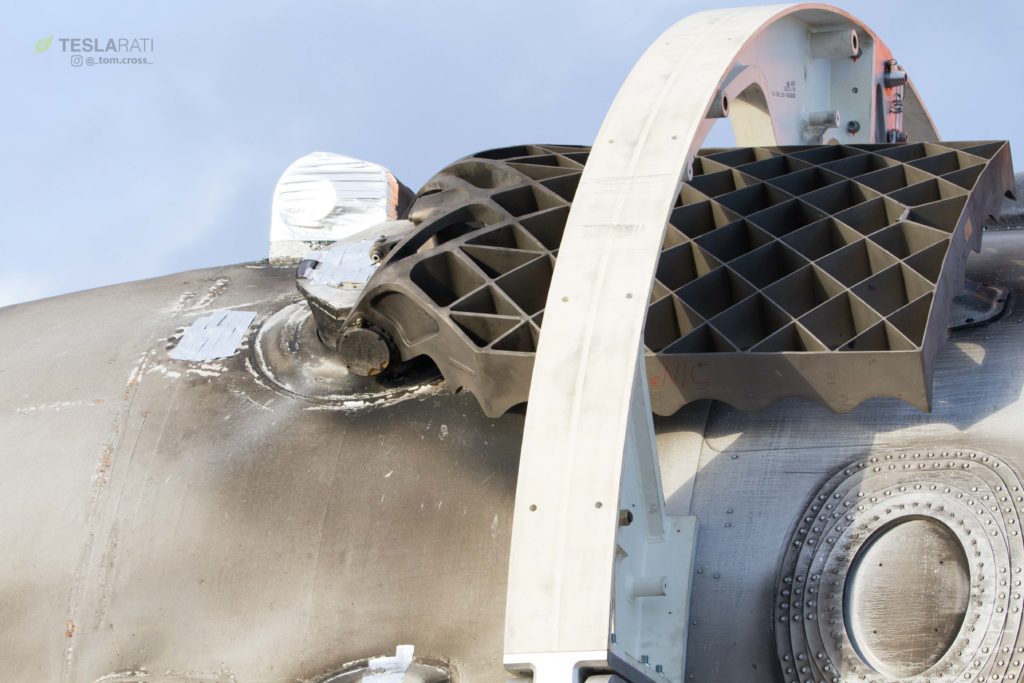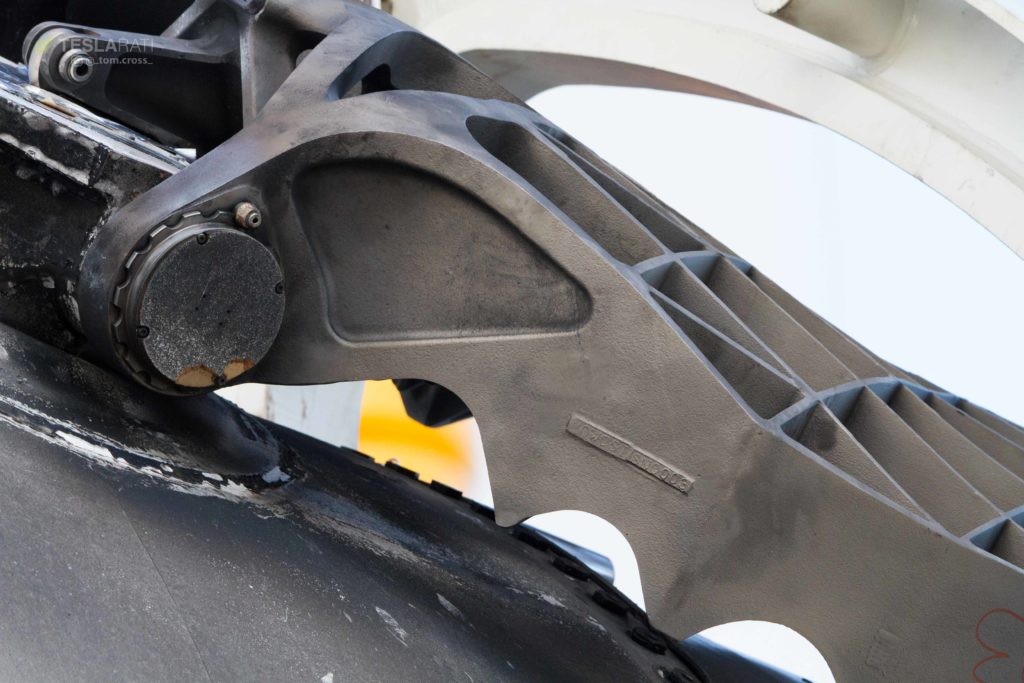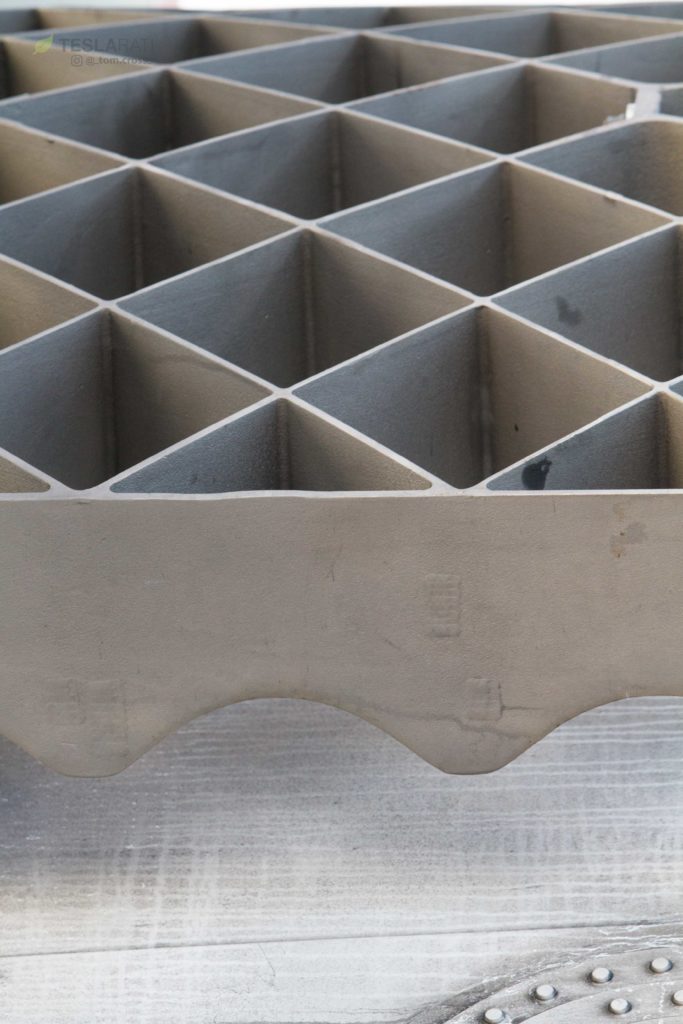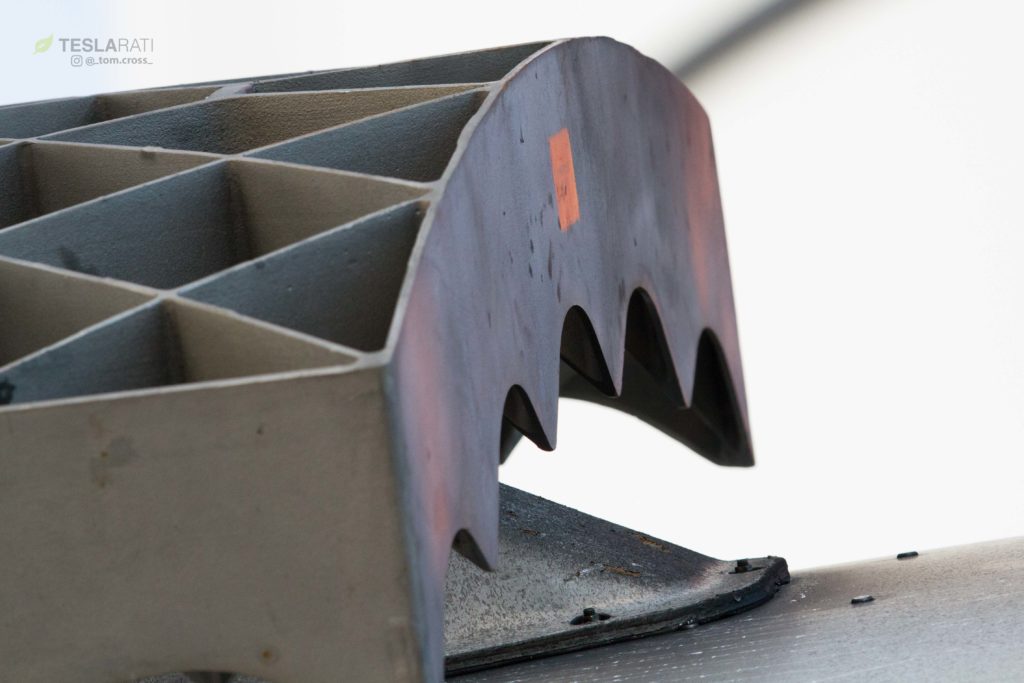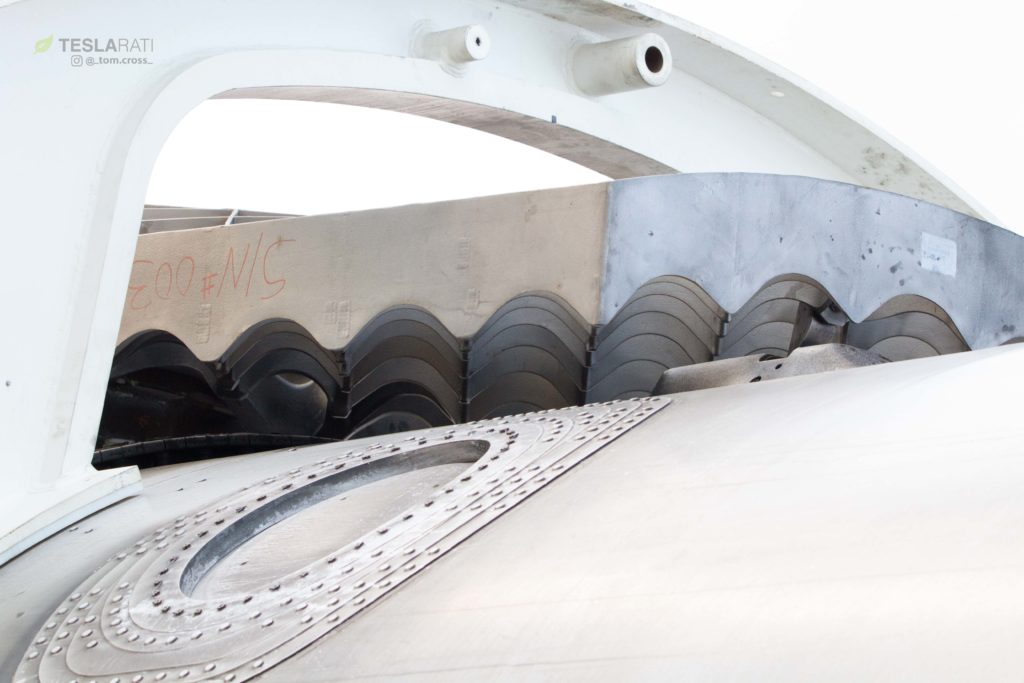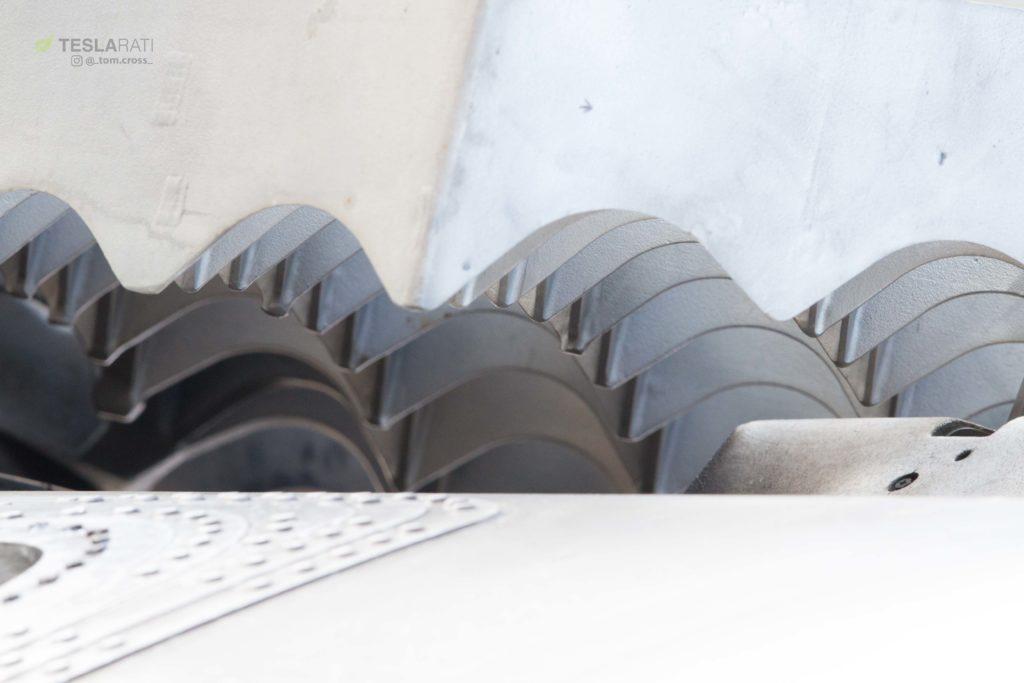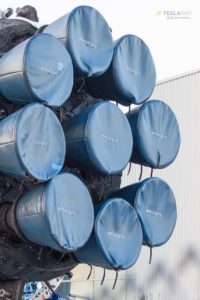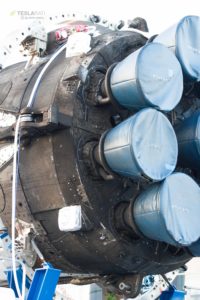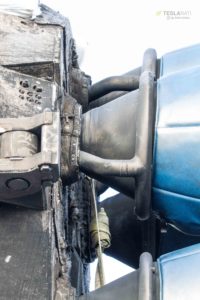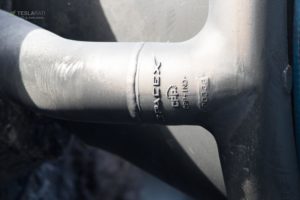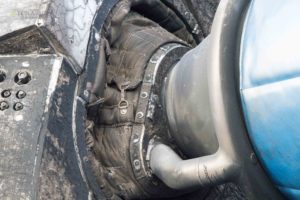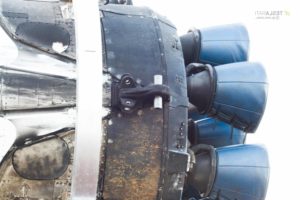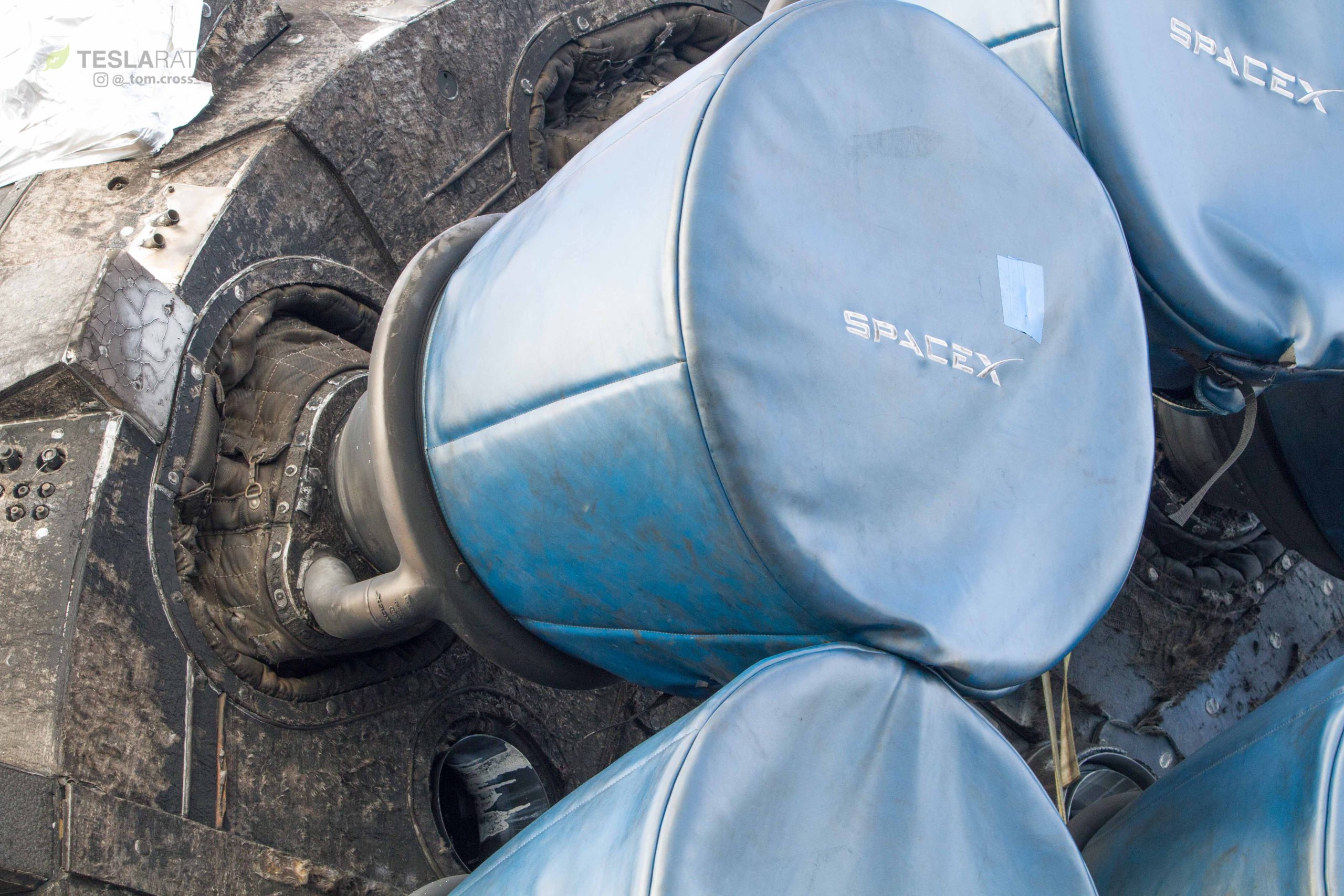
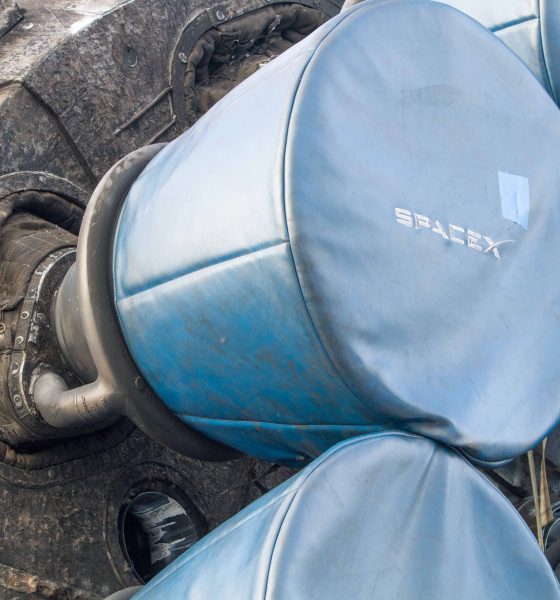
News
SpaceX’s used Falcon Heavy booster shown off in stunning detail [Gallery]
Less than two weeks after SpaceX’s Falcon Heavy performed a simultaneous first-stage landing, the Elon Musk-led space company has completed the process of recovering the massive rocket’s two side boosters, both of which can now lay claim to supporting two separate orbital missions. However, while fascinating in its own right, more interesting is the fact that SpaceX has chosen to very publicly display one of those two boosters front and center at the Kennedy Space Center Visitor Center (KSCVC).
It is likely no coincidence that the National Space Council is scheduled to have their second-ever meeting at Kennedy Space Center this Wednesday. One can readily imagine that SpaceX’s vast, sooty, flight-proven Falcon rockets can be quite an imposing and impressive sight, and it appears that the launch company is hoping to thoroughly impress the Space Council on Wednesday.
- Falcon Heavy’s side booster on display at the Kennedy Space Center visitor complex. (Tom Cross/Teslarati)
- This side booster is Core 1025, the same booster that launched and landed during the CRS-9 Cargo Dragon mission in 2016. (Tom Cross/Teslarati)
- A beautiful sunset eclipsed by SpaceX’s equally beautiful flight-proven Falcon Heavy booster. (Tom Cross/Teslarati)
Regardless of odd and interesting jockeying, the Falcon Heavy booster display is an absolutely unprecedented opportunity in SpaceX history, and Teslarati’s East coast photographer Tom Cross jumped on it. This rocket display is easily the first time the general public has ever been allowed to get so close to fresh rocket hardware, let alone the entire booster of a brand new launch vehicle. Tom has captured some extraordinarily detailed photos of various flight-proven rocket hardware, ranging from titanium grid fins to Merlin engines and even more esoteric parts, like landing leg connecting points.
Titanium grid fins
Appearing nearly unscathed after exposure to reentry temperatures that are often less kind to aluminum, SpaceX’s second flight-test of titanium grid fins has been a resounding success. It’s been hinted by CEO Elon Musk that these massive pieces of cast metal are probably the most expensive individual components on a Falcon 9, and they certainly look every bit the part. Check out these pieces of metalworking art in the best detail yet.

Falcon rockets are constructed largely of aluminum and painted with compounds that are designed to burn off under the heat of reentry, known as ablation. (Tom Cross/Teslarati)
- Falcon Heavy side booster 1025’s flight-proven nose con and grid fins, girdled by one of SpaceX’s rocket transporters. (Tom Cross/Teslarati)
- RIP B1044’s titanium grid fins. May they make a happy little reef at the bottom of the ocean. (Tom Cross)
- Note the serial number, this grid fin appears to be the 3rd titanium fin ever produced- SN00003. (Tom Cross/Teslarati)
- Details of the grid fin. (Tom Cross/Teslarati)
- Rather menacing, eh? (Tom Cross/Teslarati)
- The sinuous curves of the grid fins allow them to better attack the air at the highest pressure points during reentry. (Tom Cross/Teslarati)
- They also happen to look incredibly beautiful. (Tom Cross/Teslarati)
Merlin engines and octaweb details
Taking the brunt of the force and heat of reentry, Falcon Heavy booster 1025’s business end is a powerful display of the intense environment SpaceX’s rockets must survive in order to successfully find their way to land (or sea). Around each Merlin engine is an insulating ceramic fiber blanket intended to protect the more sensitive components of rocket plumbing from the intense heat and buffeting experienced by the engine bells. The octaweb and engine area is also lined with a fair amount of cork – yes, the same material you cork a wine bottle with – designed to sap up the heat of reentry and often ablate. This simple material has worked incredibly well for the rocket company, although it is considerably less than reusable, and likely has to be replaced each launch. Falcon 9 Block 5, expected to begin integrated testing in Texas just days from now, will likely switch to a more reusable material for its octaweb heat shield.

Falcon Heavy booster 1025’s well-worn octaweb. The Merlin engines are underneath their blue cozies. (Tom Cross/Teslarati)

A beautiful capture of one of the booster’s nine Merlin engines, showing off the pipe used to cool the engine bell, as well as the ceramic blanket that protects its more sensitive plumbing. (Tom Cross/Teslarati)
- All nine Merlin 1Ds displayed with their adorable cozies. (Tom Cross/Teslarati)
- Falcon Heavy side booster B1025 gives a sense of the sheer brutality of reentry conditions. (Tom Cross)
- An incredibly detail shot of the side of the octaweb. The large chunk of smooth metal in the center is actually one of the booster’s connection points to the Falcon Heavy center core. (Tom Cross/Teslarati)
- SpaceX’s 338th Merlin engine on display. This particular component circulates cold propellant around the engine bell to cool it down. (Tom Cross/Teslarati)
- A beautiful capture of one of the booster’s nine Merlin engines, showing off the pipe used to cool the engine bell, as well as the ceramic blanket that protects its more sensitive plumbing. (Tom Cross/Teslarati)
- Note the pieces of cork that have been torn off by the buffeting and heat on the lefthand side. (Tom Cross)
Ultimately, this Falcon Heavy booster display is an incredible show of force to the National Space Council, as well as an extraordinary opportunity and inspiration for KSC visitors. Teslarati photographer Tom Cross has given us one of the most detailed looks yet at a complete SpaceX rocket, not to mention such a historic and flight-proven specimen.
The National Space Council meets early tomorrow morning (10:00 am EST, Feb. 21), and will be live-streamed here. SpaceX’s very own President and COO Gwynne Shotwell is expected to be in attendance, and will likely present a brief statement to the council.
Be sure to follow Teslarati’s space team for exclusive backstage access to SpaceX, coast-to-coast:

News
Tesla Full Self-Driving warrants huge switch-up on essential company strategy
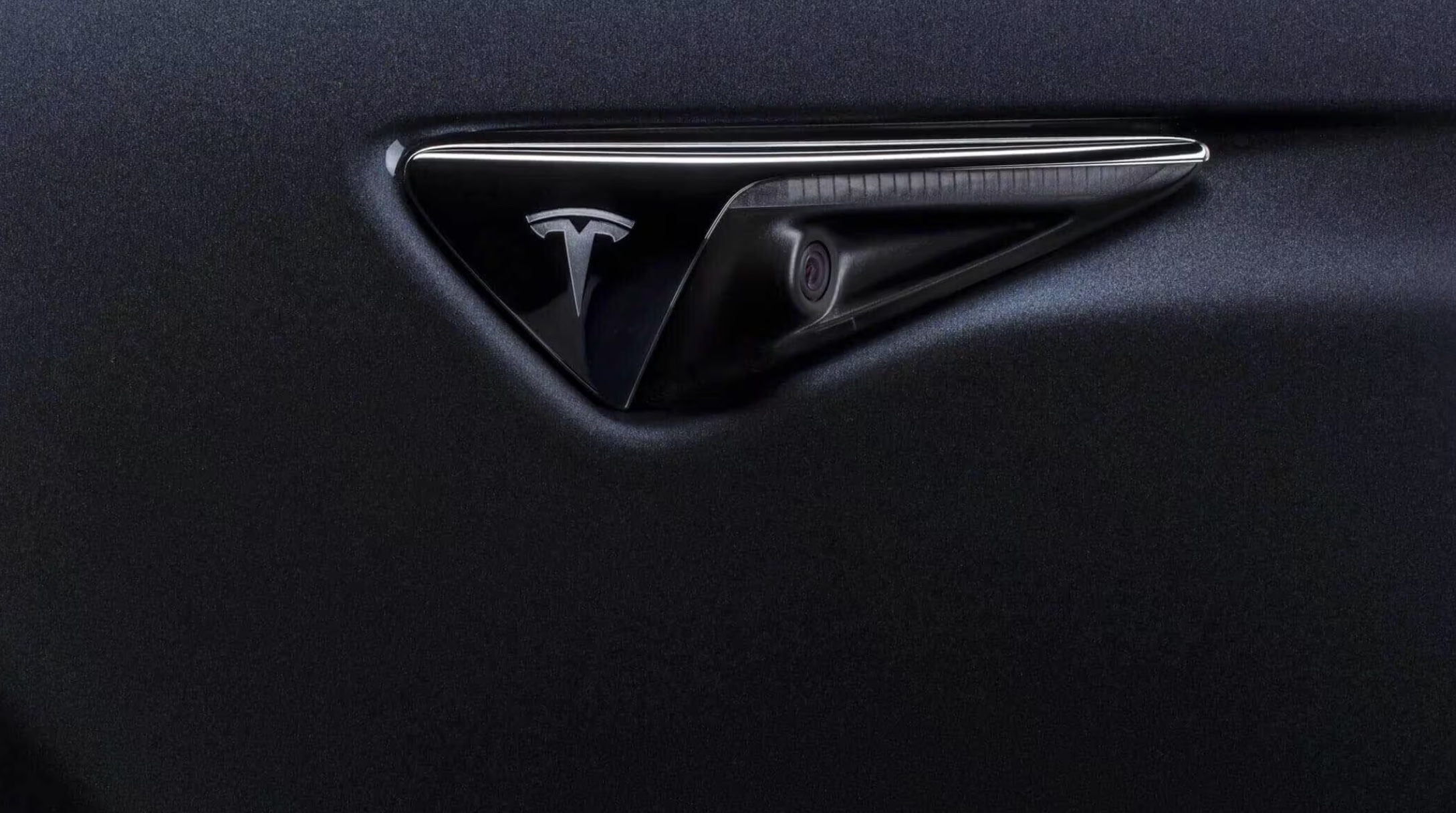
Tesla Full Self-Driving has warranted a huge switch-up on an essential company strategy as the automaker is hoping to increase the take rate of the ADAS suite.
Unlike other automotive companies, Tesla has long been an outlier, as it has famously ditched a traditional advertising strategy in favor of organic buzz, natural word-of-mouth through its production innovation, and utilizing CEO Elon Musk’s huge social media presence to push its products.
Tesla has taken the money that it would normally spend on advertising and utilized it for R&D purposes. For a long time, it yielded great results, and ironically, Tesla saw benefits from other EV makers running ads.
Tesla counters jab at lack of advertising with perfect response
However, in recent years, Tesla has decided to adjust this strategy, showing a need to expand beyond its core enthusiast base, which is large, but does not span over millions and millions as it would need to fend off global EV competitors, which have become more well-rounded and a better threat to the company.
In 2024 and 2025, Tesla started utilizing ads to spread knowledge about its products. This is continuing, as Full Self-Driving ads are now being spotted on social media platforms, most notably, X, which is owned by Musk:
NEWS: Tesla is running paid advertisements on X about FSD (Supervised). Here’s an ad they started running yesterday: pic.twitter.com/IHVywLMyTd
— Sawyer Merritt (@SawyerMerritt) November 25, 2025
Interestingly, Tesla’s strategy on FSD advertising is present in Musk’s new compensation package, as the eleventh tranche describes a goal of achieving 10 million active paid FSD subscriptions.
Full Self-Driving is truly Tesla’s primary focus moving forward, although it could be argued that it also has a special type of dedication toward its Optimus robot project. However, FSD will ultimately become the basis for the Robotaxi, which will enable autonomous ride-sharing across the globe as it is permitted in more locations.
Tesla has been adjusting its advertising strategy over the past couple of years, and it seems it is focused on more ways to spread awareness about its products. It will be interesting to see if the company will expand its spending even further, as it has yet to put on a commercial during live television.
We wouldn’t put it out of the question, at least not yet.
News
Tesla Model Y Standard: first impressions from a Premium owner
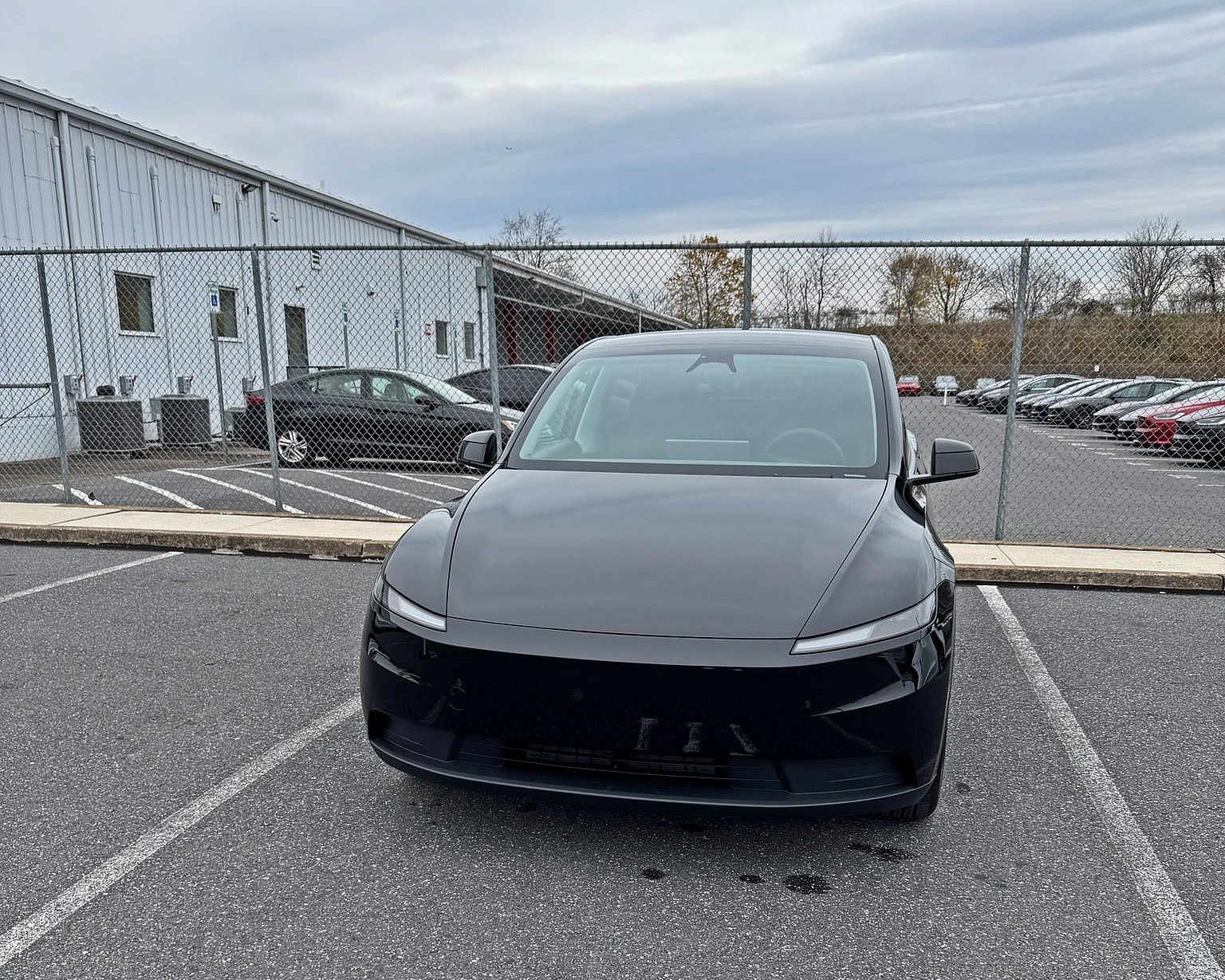
Tesla was nice enough to hook us up with the new Model Y “Standard” trim for a few days, and while we’ll be sure to fill you in on the full experience in the coming days, there are a lot of differences we noticed right off the bat, which make the ownership experience different from the “Premium” configuration level.
I purchased a Model Y Long Range All-Wheel-Drive back in August and took delivery just two weeks later. Through the first three months of owning my car, I’ve come to love so many things about the Tesla experience.
I traded my ICE vehicle for a Tesla Model Y: here’s how it went
However, I was interested in experiencing the affordable trim and seeing whether I would miss any of the voided features of the “Premium” Model Y.
Through the first 24 hours, here are my first impressions of the Model Y Standard as a Premium trim level owner:
Overall Aesthetic
The lack of a light bar is not something that is a dealbreaker. In fact, I would argue that the Model Y Standard’s more traditional headlight design is just as pleasing from an aesthetic standpoint.
The car is great looking from top to bottom; there are not a substantial number of differences besides the lack of a lightbar on both the front and the back of the car.
Overall, it is a very sleek vehicle, but the major changes are obviously with the interior.
Interior Changes
This is where the big differences are, and some of the things I’ve gotten used to in the Premium are not included. If I didn’t have a Premium Model Y already, I’m not sure I’d miss some of the things that are not present in the Standard trim, but I believe I’d get annoyed with it.
First impressions:
✅ Interior is excellent. I definitely miss the additional storage already that is available in my Premium. I could definitely get over it though
✅ Noticeable step down in sound system. Long Time by Boston absolutely cranks in the Premium; it’s still very… https://t.co/JNWvxTd8p1
— TESLARATI (@Teslarati) November 25, 2025
Storage
The Premium has a large storage compartment between the cupholders and the wireless charger, which is not present in the Standard trim. Instead, it is more like the Cybertruck, as there is a pass-through and floor storage.
I think that the pass-through is nice, but the additional storage is something I take advantage of, especially as someone who films Full Self-Driving videos, which requires hauling mounts, GoPros, and other accessories.
The sleekness of the Premium trim is also something I prefer; I really enjoy having the ability to close those compartments and cover the cupholders.
Obviously, this is a really trivial issue and not something that is substantially impactful from an ownership experience. If I weren’t already an owner, I am not sure I’d even have something to complain about.
Material Differences
The Premium trim seats are completely Vegan Leather, which I really do like, even as someone who doesn’t really love leather seats due to their temperature dependency.
The Standard trim features a Textile and Vegan hybrid, which has half of the seat a different material than the other.
The material is very similar to what I had in my previous car, a Bronco Sport. It was very durable, easy to clean, dried quickly, and hid a lot of things that leather does not, like oils from your skin, which constantly require attention to keep your interior looking fresh.
The wireless charger is also a different material, as the Premium features an Alcantara material on that. The Standard has a rubberized and textured backing, which looks good, too. They’re both more than suitable.
Other Missing Features
The Standard lacks a few minor things, most noticeably is the ambient lighting. The biggest change, however, and something I really miss, is the glass roof.
A lot of people told me that when I got my Model Y, I wouldn’t even notice the glass roof after a few weeks. That could not be further from the truth. I look out of it all the time, and it’s one of my family’s favorite parts of the car.
My Fiancè and I really love parking and watching Netflix when we pick food up, especially when it’s raining, because the glass roof gives such a great view.
We also loved it as Fall arrived, because it was great to look at the foliage.
Buy the Tesla.
Enjoy the glass roof. pic.twitter.com/r2GDyOEEWu
— TESLARATI (@Teslarati) October 28, 2025
Bigger Differences
There are also a handful of very noticeable differences from the overall cabin experience, especially with the sound system.
Much Weaker Sound System
The Model Y Standard has just 7 speakers and 1 amp, with no subwoofer. This is a significant step down from the 13-15 speakers in the Premium Long Range AWD Model Y, the 2 amps it comes with, and 1 subwoofer in the trunk.
I usually like to listen to Long Time by Boston to test out a sound system, and it was noticeably weaker in the Standard. It was missing a big portion of the umph that is provided by the Premium’s sound system.
Cabin Noise
It feels like the Cabin Noise is definitely more noticeable in the Standard, which is something I really love about my Model Y. It is able to dampen so much road noise from louder cars, and I don’t feel as if it is very quiet in the Standard.
This is perhaps the biggest make-or-break for me with this car. I truly have been spoiled by how quiet the cabin is in the Premium, and it’s due to the lack of acoustic-lined glass in the Standard.
I will be doing a more in-depth review of the Model Y Standard, especially with ride quality, later this week.
News
Tesla takes a step towards removal of Robotaxi service’s safety drivers
Tesla watchers are speculating that the implementation of in-camera data sharing could be a step towards the removal of the Robotaxi service’s safety drivers.

Tesla appears to be preparing for the eventual removal of its Robotaxi service’s safety drivers.
This was hinted at in a recent de-compile of the Robotaxi App’s version 25.11.5, which was shared on social media platform X.
In-cabin analytics
As per Tesla software tracker @Tesla_App_iOS, the latest update to the Robotaxi app featured several improvements. These include Live Screen Sharing, as well as a feature that would allow Tesla to access video and audio inside the vehicle.
According to the software tracker, a new prompt has been added to the Robotaxi App that requests user consent for enhanced in-cabin data sharing, which comprise Cabin Camera Analytics and Sound Detection Analytics. Once accepted, Tesla would be able to retrieve video and audio data from the Robotaxi’s cabin.
Video and audio sharing
A screenshot posted by the software tracker on X showed that Cabin Camera Analytics is used to improve the intelligence of features like request support. Tesla has not explained exactly how the feature will be implemented, though this might mean that the in-cabin camera may be used to view and analyze the status of passengers when remote agents are contacted.
Sound Detection Analytics is expected to be used to improve the intelligence of features like siren recognition. This suggests that Robotaxis will always be actively listening for emergency vehicle sirens to improve how the system responds to them. Tesla, however, also maintained that data collected by Robotaxis will be anonymous. In-cabin data will not be linked to users unless they are needed for a safety event or a support request.
Tesla watchers are speculating that the implementation of in-camera data sharing could be a step towards the removal of the Robotaxi service’s safety drivers. With Tesla able to access video and audio feeds from Robotaxis, after all, users can get assistance even if they are alone in the driverless vehicle.
